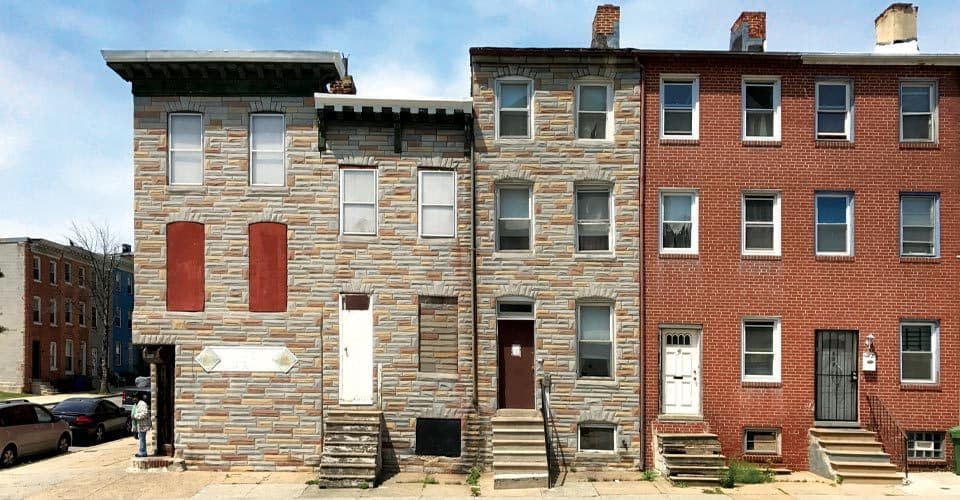Roots of Injustice
Research Finds More Vulnerable Tree Canopy in Redlined Baltimore
By Liam Farrell
Photo by Eli Pousson via Baltimore Heritage
More than eight decades after U.S. government maps formalized discriminatory real estate practices, new University of Maryland research is showing how one legacy of redlined neighborhoods is still blooming in contemporary Baltimore’s environment.
The study, led by entomology Assistant Professor Karin Burghardt and published in Ecology, analyzed streetside trees in 36 Baltimore neighborhoods and compared their quality to how those areas were once rated by the Home Owners’ Loan Corp. (HOLC). That New Deal-era program, which labeled areas as green, blue, yellow or red (for “hazardous”), was designed to boost the real estate industry by identifying prime spots for investment. But it also cemented urban decay and racial wealth disparities by denying many minority residents the financing needed to buy their own homes.
And more than 50 years after the 1968 Fair Housing Act banned redlining, Baltimore neighborhoods once rated green by HOLC are still nine times more likely to have larger and older trees than redlined places, meaning they are better able to provide shade to counter heat waves, absorb stormwater and offer havens for species like birds that mitigate pests, Burghardt says.
“It is reflective of how society viewed these neighborhoods and how they invested in them,” she says.
In addition, the trees in redlined areas were not only younger, but were more likely to be from a single species, red maple. That lack of diversity could one day make those neighborhoods’ greenery vulnerable to environmental problems like plant disease or invasive insects.
“When we are doing these plantings, we need to be aware of the potential ecological legacies we are creating,” Burghardt says. “If you are really overinvested in one species, then these areas that we reforested all at once are going to be hit worse.”
0 Comments
Leave a Reply
* indicates a required field

